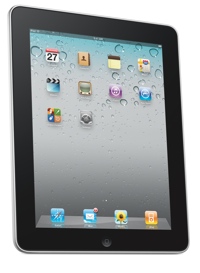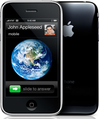Multitouch on the iPad and other media tablets has liberated users from the hardware keyboard and pointing device (aka the mouse), and as media tablets become more commonplace, users will expect the convenience and simplicity of multitouch user interfaces when they interact with other computing devices, according to a new report by the Gartner research group (http://www.gartner.com).
In the Gartner Special Report “iPad and Beyond: What the Future of Computing Holds,” Gartner analysts examine how the iPad has impacted the hardware industry, and how media tablets are changing what users will expect out of their computing devices.
“During the next five to 10 years, media tablets will instigate change in computing form factors; modular designs will enable tablets to take on new functions, becoming the cross-platform controller and brain for hybrid consumer electronics and computers,” says Angela McIntyre, research director at Gartner. “Tablets will be substitutes for several of the consumer electronics consumers often carry with them. Thin-and-light mobile computers with tablet-like features will become mainstream, pushing out some bulkier computer styles that have been the norm.”
Makers of computers and consumer electronics are noticing the shift in consumer expectations and are incorporating features popularized by the iPad into the new products they’re developing. Multitouch technology has become the de facto interface of high-end smartphones and media tablets, and will extend to additional consumer electronic devices and to computers.
“Other hybrid designs leverage the flexibility of tablets to become the brains of consumer electronic devices,” McIntyre says. “One tablet can replace multiple dedicated electronics devices by connecting with different peripherals. Tablets docked in the dashboards of cars can replace dedicated navigation devices and in-car entertainment, and environmental controls. Wirelessly connect a blood pressure cuff, a bathroom scale and an oximeter to a tablet to create a home health monitor that can plot personal health trends and send the data to a doctor. Mount a tablet into a projector, and it becomes digital signage in a retail store or a device for streaming media via the Internet.”
Interface technologies can be clustered around five basic modalities, according to Gartner. They include state of mind (of the user), human-computer hybrids, action detection, speech and biosensing. Of the interface modalities, action detection has been extensively used to this point because touch — for example, pressing a key, clicking a mouse or touching a screen — is the standard way to interact with computing endpoint devices, such as tablets, computers and smartphones.
Gartner analysts say the iPad has created a transformational change in how people interact with computers.
“Alternative user interfaces, such as multitouch, are essential for extending the deployment of computing devices into new markets,” McIntyre says. “Smartphones, tablets and tablet hybrids will become the first pathway to the Internet for many. The keyboard on computers is a major barrier for those who have had no reason or opportunity to become facile with qwerty.”
Additional information is available in the Gartner Special Report “iPad and Beyond: What the Future of Computing Holds” at http://www.gartner.com/technology/research/ipad-media-tablet/future-of-computing.jsp . The Special Report includes links to nearly 20 research documents that examine how tablets are changing how people interact with computers.



